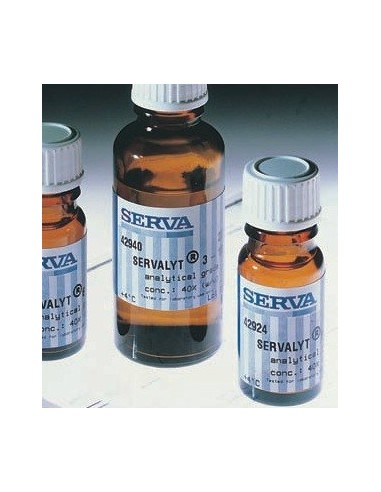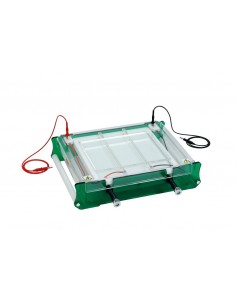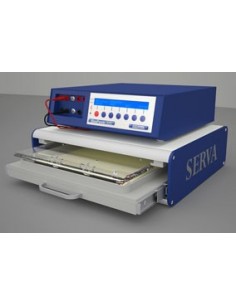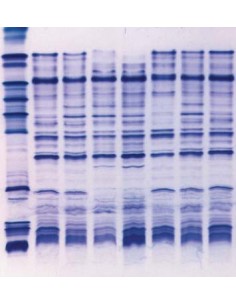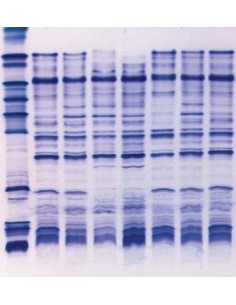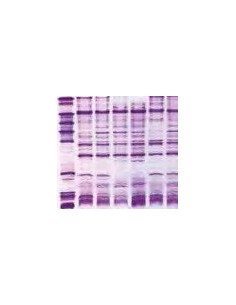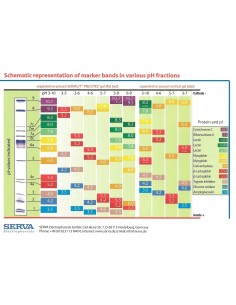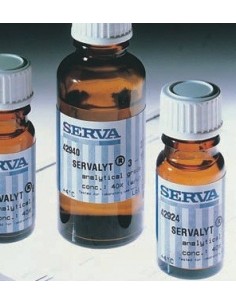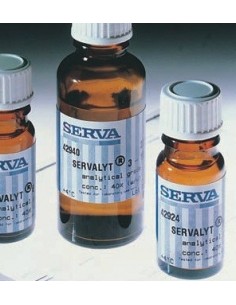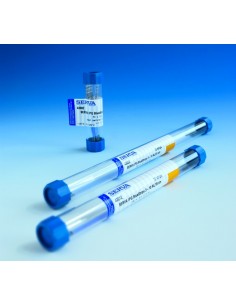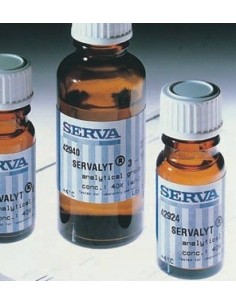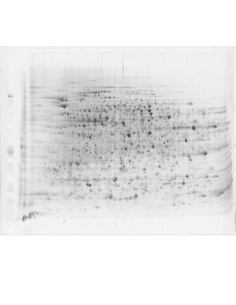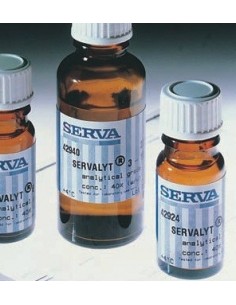Ampholytes 3-10 (Servalyt 3-10)
Carrier Ampholytes pH 3-10
Applications: Isoelectric focusing, capillary electrophoresis, free-flow electrophoresis
SERVALYT™ ampholytes are supplied as 40 % aqueous concentrate and sterile filtered (0.2 μm). If stored at 4 °C and unopened shelf is up to 3 years. The common working concentration is in the range of 3 % to 5 %. Technical grade SERVALYT™ carrier ampholyte pH 4-9 T (Cat. No. 42910) is economical to use if preparative work is envisaged. The T grade SERVALYT™ is not sterile filtered. Gels can be prepared in glass tubes or in horizontal gel format (the IEF gel is cut into strips applied to the second dimension (SDS PAGE). SERVALYT™ ampholytes are recommended for rehydration of dry IPG gel strips in 2DGE, DIGE, e.g. SERVA IPG BlueStrips, and medium-free IEF systems, e.g. free flow and capillary electrophoresis. SERVALYT™ 3-10 IsoDalt (Cat. No. 42951) is particularly suited to 2D-electrophoresis.
Benefits:
- Available Two Sizes: 10 ml & 25ml
- High Resolution
- Widest Range Available
- Fast Staining and Clear Background
- Ready to Use or Blending
- 3 year shelf life
Comparison of different brands of carrier ampholytes
Using an ampholyte pH 3-10 in isoelectric focusing (IEF) provides several benefits, including:
Enhanced resolution: The pH range of 3-10 is well-suited for the separation of proteins with a wide range of isoelectric points (pI). It allows for a more refined and precise resolution of proteins compared to narrower pH ranges. This increased resolution enables better characterization and differentiation of closely related proteins.
Efficient focusing: The use of ampholytes with a pH range of 3-10 facilitates efficient focusing of proteins during IEF. The pH gradient created by the ampholytes helps proteins migrate towards their respective pI positions, leading to sharp and distinct protein bands. This promotes better separation and prevents smearing or overlapping of bands.
Reproducibility: Ampholyte pH 3-10 ensures consistent and reproducible results in IEF experiments. The stability and reliability of the pH gradient provided by the ampholytes allow for consistent migration and focusing of proteins across multiple runs. This enables better comparison and analysis of data between experiments.
Compatibility with various samples: Ampholytes with a pH range of 3-10 are suitable for a wide range of protein samples. They can effectively separate proteins from different sources, including biological fluids, cell lysates, or purified protein preparations. This versatility makes them applicable in various research areas, such as proteomics, biotechnology, and clinical diagnostics.
Compatibility with various detection methods: IEF using an ampholyte pH 3-10 is compatible with different detection methods, such as staining, immunoblotting, or mass spectrometry. This allows for further analysis and identification of proteins based on their migration pattern or specific protein properties.
Simplified experimental setup: The pH range of 3-10 is commonly used in IEF, and commercially available ampholyte mixtures are specifically designed for this range. These pre-made mixtures simplify the experimental setup, as they eliminate the need for individual component preparation and pH adjustment. This saves time and ensures consistent results.
Scalability: IEF with an ampholyte pH 3-10 can be easily scaled up for large-scale protein separations. This makes it suitable for industrial applications, where high-throughput analysis or large sample volumes are required.
In summary, using an ampholyte pH 3-10 in IEF offers enhanced resolution, efficient focusing, reproducibility, compatibility with various samples and detection methods, simplified experimental setup, and scalability for large-scale applications.
1 Reviews
Improved solubility
We found these helped increase protein solubility over others.

